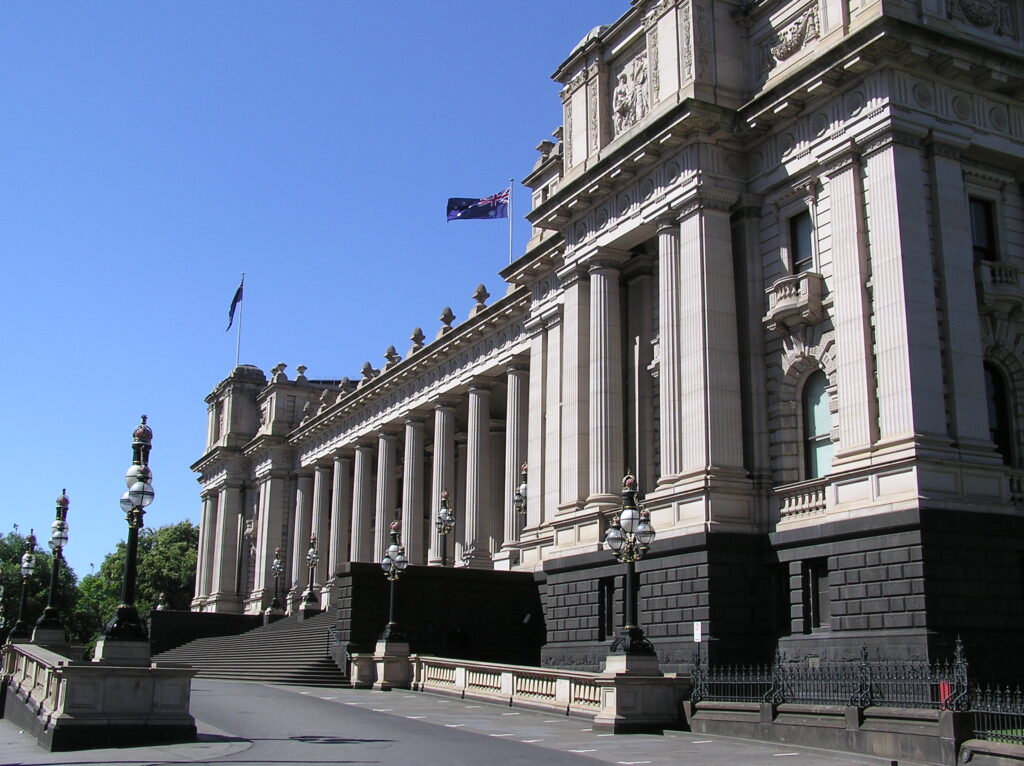ADVOCACY WIN: Victorian Parliament votes to strengthen local heritage protections to combat illegal demolition and demolition by neglect

Featured image: Donaldytong
Following debate in both houses of Parliament, MPs have given the green light to changes to the Planning & Environment Act 1987 which will provide local and state government with increased powers to penalise property owners for unlawful demolition, and allowing properties to fall into disrepair.
The Planning & Environment Amendment Bill 2021 was, in part, prepared in response to the illegal demolition of the Corkman Irish Pub (Carlton Inn) in 2016, a turning point in the debate on heritage protection in Victoria.
While in 2016 the Planning Minister, Richard Wynne, pledged to ensure the Corkman Irish Pub would be rebuilt, a protracted legal battle revealed that it was not lawfully possible to require reconstruction under the existing provisions of the Planning & Environment Act 1987, which regulates properties protected by local heritage overlays.
The amendments proposed under the new Bill will prohibit development on sites for up to 10 years if the owners are charged with unlawful demolition, and will enable existing permits to be revoked and allow for new permits to be issued for specific purposes – such as building a park or reconstruction or repair of a heritage building. The Bill also aims to and disincentivise the practice of allowing protected buildings to fall into disrepair, known as “demolition by neglect”, an issue that the National Trust has been campaigning on for many years.
Debate in both the Legislative Assembly and the Legislative Council revealed passionate and strong-held support for cultural heritage across the political spectrum.
Speaking in the Legislative Council on 18 March, Dr Samantha Ratnam, leader of the Victorian Greens, encouraged members to reflect on the importance of heritage to the community, and to our society:
One of the reasons why this topic is often so contentious is that we actually do value things differently. Some of that difference is because of our aesthetic preferences, historic knowledge or our sensitivity and values about the preservation of culture. It can also be contentious because what we value and want for our future built form can differ a lot between us. But acknowledging that we have different preferences and values does not mean that we should not attempt to reach some sort of agreement about what we value collectively as a society. Yes, not everyone will agree, but without a collective agreement of what we value and therefore what we should preserve, we are vulnerable to those with the most to gain and the most resources getting to impose their values on us. And if history is anything to go by, it is big corporate developers with everything to gain by demolishing the things we value for their own profits that get to dominate what our neighbourhoods and our towns will look like and feel like and determine if our natural environment is even given the smallest chance to survive.
Dr Ratnam also raised the importance of recognising that our cultural heritage goes beyond the built environment, – encompassing significant trees, landscapes, and objects – and a need to fundamentally overhaul and modernise our planning system to “ensure that the relationship between people, our built environment and our natural environment is sustainable for the environment and for people.”
Sustainable Australia MP Clifford Hayes reflected on the issue of “demolition by neglect”, and the need to take a carrot and stick approach, providing support owners to maintain heritage buildings, while also ensuring that there are adequate penalties in place for owners that see neglect as an avenue to demolition:
When I was a councillor it was too often that I saw individuals exploit this loophole—allowing a heritage property to fall into a state of disrepair then using that disrepair, which had gone on for years, to demolish and redevelop the site, whether it be allowing properties to flood or deteriorate or even fall victim to deliberately lit fires. But as a community we should also consider helping owners maintain heritage buildings, and that should be something that is considered in money levied out of fines or charges against heritage properties. But on the negative side, it has been all too easy for developers to do away with stunning and beautiful heritage properties by neglect, and that is something that needs further attention. It needs to be addressed, and it is wrong.
Many MPs raised examples of demolition by neglect, including Hoffman Brickworks in Brunswick, which is currently the subject of a demolition proposal.
The National Trust commends the Government and Victorian Parliament for supporting these new provisions which, in the words of Mr Hayes, are “only a step in the marathon it will take to protect our vanishing heritage in Melbourne”- but an important step.
The Bill will now be prepared for Royal Assent.
+ There are no comments
Add yours